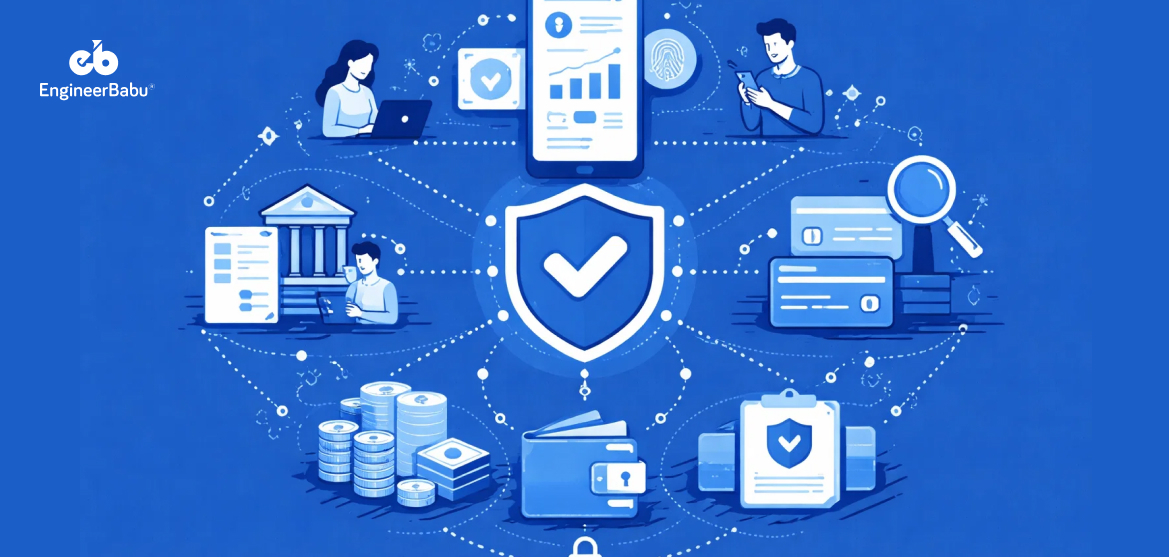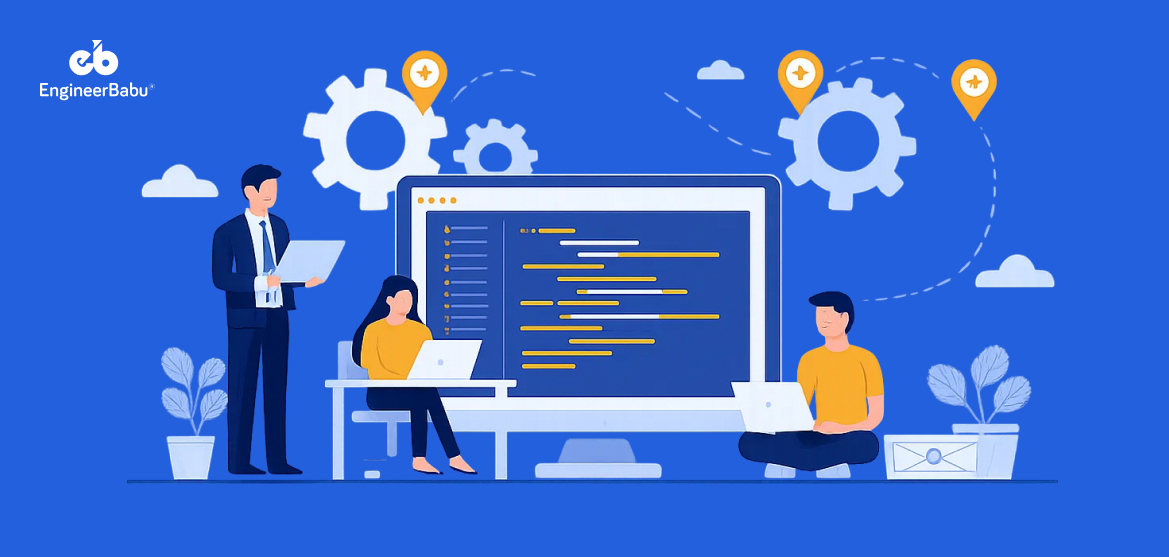The last time you paid for coffee, split a bill with friends, or checked your stock portfolio, chances are you used a fintech app without even thinking about it. That’s the level of integration financial technology has achieved.
And this isn’t a niche trend. According to IMARC Group, in the U.S., the fintech market reached roughly USD 53 billion in 2024 and is forecasted to surpass USD 180 billion by 2033, growing at a 13.9% annual rate. Moreover, in the US alone, the fintech adoption reached 74% in 2025.
This shows that, for entrepreneurs and product leaders, this presents a massive opportunity but a tough reality as well.
How?
- The space is competitive,
- Heavily regulated, and
- User expectations are unforgiving.
Therefore, to succeed, your fintech app needs more than clever features, it must inspire trust and comply with strict financial laws. This guide will tell you how to build a fintech app that’s secure, compliant, and scalable from day one. So, let’s get into it.
Understand the Fintech App Landscape
Before you decide on features or start writing code, you need a clear understanding of the financial technology ecosystem you’re stepping into. The fintech market is not a one-size-fits-all, it’s a diverse collection of specialised sectors, each with unique challenges, user expectations, and regulatory frameworks.
Some of the major categories include:
- Digital Payments – From UPI and mobile wallets to instant cross-border transfers, where speed and security are the defining factors.
- Lending & Credit – Peer-to-peer lending, buy-now-pay-later platforms, and digital microloans are reshaping credit access.
- Wealth & Investment – Robo-advisors, stock trading apps, and portfolio trackers offer data-driven ways to grow wealth.
- InsurTech – Digital-first insurance platforms that make policy selection and claims management faster and simpler.
- Crypto & Blockchain – Exchanges, NFT marketplaces, and decentralised finance platforms blending finance with blockchain innovation.
Emerging trends like embedded finance, open banking, and AI-powered financial insights are also redefining user expectations almost monthly. This is why understanding the current landscape is the first real step in understanding how to build a fintech app.
Step-by-Step Process to Build a Fintech App from Scratch
Building a fintech app that people trust and love takes more than just a good idea. It means planning every step carefully, making smart development decisions, and keeping security, compliance, and user experience at the heart of the process.
Here’s how you can turn your concept into a successful, ready-to-launch product.
Step 1: Define Your Fintech Niche and Business Model
One of the biggest mistakes founders make is trying to be “everything for everyone” in fintech. The most successful apps only focus on solving a specific financial problem for a clearly defined audience, and then expand from there.
So, start by identifying the exact problem you want to solve. Are you making it easier for gig workers to access instant credit? Helping small businesses manage cross-border payments?
Your niche will determine the core features, security protocols, and even the compliance requirements your app must meet.
Next, choose a business model that fits your solution and market:
- Transaction Fees – Common for payment platforms and money transfer services.
- Subscription Plans – Works well for premium features in wealth management or analytics tools.
- Freemium with Upsell – Attracts a large base while monetising advanced capabilities.
- Partnership Revenue – Integrating with banks, insurers, or e-commerce platforms for shared revenue streams.
Clarity at this stage is critical because in the process of how to build a fintech app successfully, your niche and business model act as the blueprint for every decision you’ll make later. Recommended Read: How to Build an App Like Fidelity
Step 2: Research Regulatory & Compliance Requirements
Fintech operates in one of the most tightly regulated environments in the digital world. Before writing a single line of code, identify the financial regulations that apply to your product and target markets.
This includes securing necessary licences, understanding transaction limits, and complying with region-specific rules, such as:
- RBI guidelines in India,
- FCA regulations in the UK, or
- SEC oversight in the US.
At a minimum, your app must follow KYC (Know Your Customer) and AML (Anti-Money Laundering) protocols, protect payment data under PCI-DSS Compliance, and respect user privacy with frameworks like GDPR. Also, regulations here evolve quickly, so early collaboration with legal and compliance experts is essential.
Embedding compliance into your architecture from day one not only avoids costly rework but also builds trust with users and potential partners. Remember, in fintech, meeting legal standards is a foundation for credibility and long-term growth.
Step 3: Plan Your Core Features
When mapping out the aspects of how to build a fintech app, defining the right set of features early on can make or break your product’s success. Start with the essentials that every financial application needs. This includes secure user onboarding, KYC verification, real-time transaction processing, account management, and multi-factor authentication.
These are the non-negotiables that ensure your app is functional, safe, and compliant from day one.
From there, layer in advanced features that align with your niche and audience. This could include AI-powered spending insights, budgeting tools, peer-to-peer (P2P) payments, investment tracking, or cryptocurrency integration.
Also consider user experience from multiple angles: speed, accessibility, and multilingual support can be as critical as the features themselves. Prioritise functionality for your MVP, then expand based on user feedback and adoption patterns. Also Read: Types of Fintech Apps
Step 4: Choose the Right Tech Stack
Selecting the right technology stack is a strategic decision that impacts performance, scalability, and security. For the backend, robust options like Python/Django, Java, or NodeJS development provide the reliability and speed needed for high-volume financial transactions.
On the frontend, Flutter or React Native development enables cross-platform features without sacrificing performance or user experience.
Also, database choices matter just as much, PostgreSQL and MongoDB are popular for their scalability and data integrity. Moreover, hosting on secure cloud providers like AWS, Azure, or Google Cloud ensures uptime, disaster recovery, and compliance support.
Finally, security should be embedded in the stack from the start. This means choosing frameworks that support encryption, secure API development, and token-based authentication.
Step 5: Design a Secure and User-Centric UI/UX
In the process of building a fintech app, design holds a critical role. Users need to feel secure from their very first interaction, so the interface must balance clarity, simplicity, and strong security cues. So, how can we create a simple yet secure interface?
Begin with clear navigation and remove unnecessary friction from onboarding while keeping verification steps transparent. Every transaction should provide instant, reassuring feedback. Make sure to avoid the common UI/UX design mistakes in fintech development.
Secondly, accessibility is non-negotiable. So, offer scalable text, high-contrast themes, and multiple language options to reach a diverse audience. Ensure the interface adapts seamlessly to different devices and screen sizes.
Furthermore, security should blend naturally into the experience. Biometric logins, two-factor authentication, and visible encryption indicators reassure users without disrupting their journey. When security and usability are in harmony, you create a fintech app people trust and keep using.
Step 6: Build the MVP
As you are learning how to build a fintech app efficiently, the smartest approach is to start with a Minimum Viable Product (MVP) instead of a fully loaded platform. This ensures you launch faster, minimise upfront costs, and validate your concept with actual users before scaling.
Here, working with specialists in MVP development services helps you identify the must-have features for your first release. This includes secure onboarding, basic transaction processing, and core account management.
Also, testing these in a sandbox environment with dummy financial data keeps the process safe and compliant.
In simple terms, adopt an agile approach: launch the MVP, gather user feedback, and iterate in short, focused sprints. Each update should be informed by real-world usage. Thus, ensuring you invest in features that matter.
Step 7: Test, Launch, and Scale
Before your fintech product reaches the market, it must pass through rigorous testing. This includes:
- Functional testing to verify that features work as intended,
- Compliance testing to meet regulatory requirements,
- Performance testing to ensure stability under heavy loads, and
- Security testing to safeguard sensitive financial data.
Start with a soft launch to a small, controlled audience. This phased rollout allows you to identify real-world issues without exposing your entire user base to potential bugs. Use the feedback to fine-tune performance, address usability concerns, and strengthen security measures.
When ready to scale, a modular architecture ensures new features can be added without disrupting existing functionality. Also, hosting on robust cloud platforms enables seamless scaling, improved uptime, and efficient resource management.
Conclusion
Learning how to build a fintech app is more than just a technical process; it’s about creating a secure, compliant, and user-focused solution that earns long-term trust.
From defining your niche and meeting strict regulations to designing a seamless interface, every step shapes your app’s success in a competitive market.
However, building a fintech app on your own is indeed a tough task. Therefore, partnering with the right team can make all the difference. So, if you’re ready to bring your idea to life and looking to hire fintech developers who understand both the technology and the regulations behind it, EngineerBabu can help.
Let’s turn your fintech vision into reality. Connect with EngineerBabu today.
FAQs about How to Build a Fintech App
- How much does it cost to build a fintech app?
The cost depends on many factors, including the app’s complexity, feature set, compliance requirements, and chosen tech stack. A simple MVP will cost significantly less than a complex, fully featured platform.
- How long does it take to develop a fintech app?
Timelines vary based on scope. A streamlined MVP can be launched relatively quickly, while a feature-rich solution with multiple integrations will take considerably longer.
- Do fintech apps require special licences?
Yes. Depending on your location and services offered, you may need financial licences or regulatory clearance from authorities such as the RBI, FCA, or SEC.
- How do I ensure my fintech app is secure?
Use end-to-end encryption, two-factor authentication, secure APIs, and regular security testing. Building security into your architecture from the start is essential.
- Can EngineerBabu help with fintech app development?
Yes, EngineerBabu delivers secure, scalable fintech solutions from MVP to market-ready products. We also provide dedicated teams if you want to hire remote developers with proven expertise.




